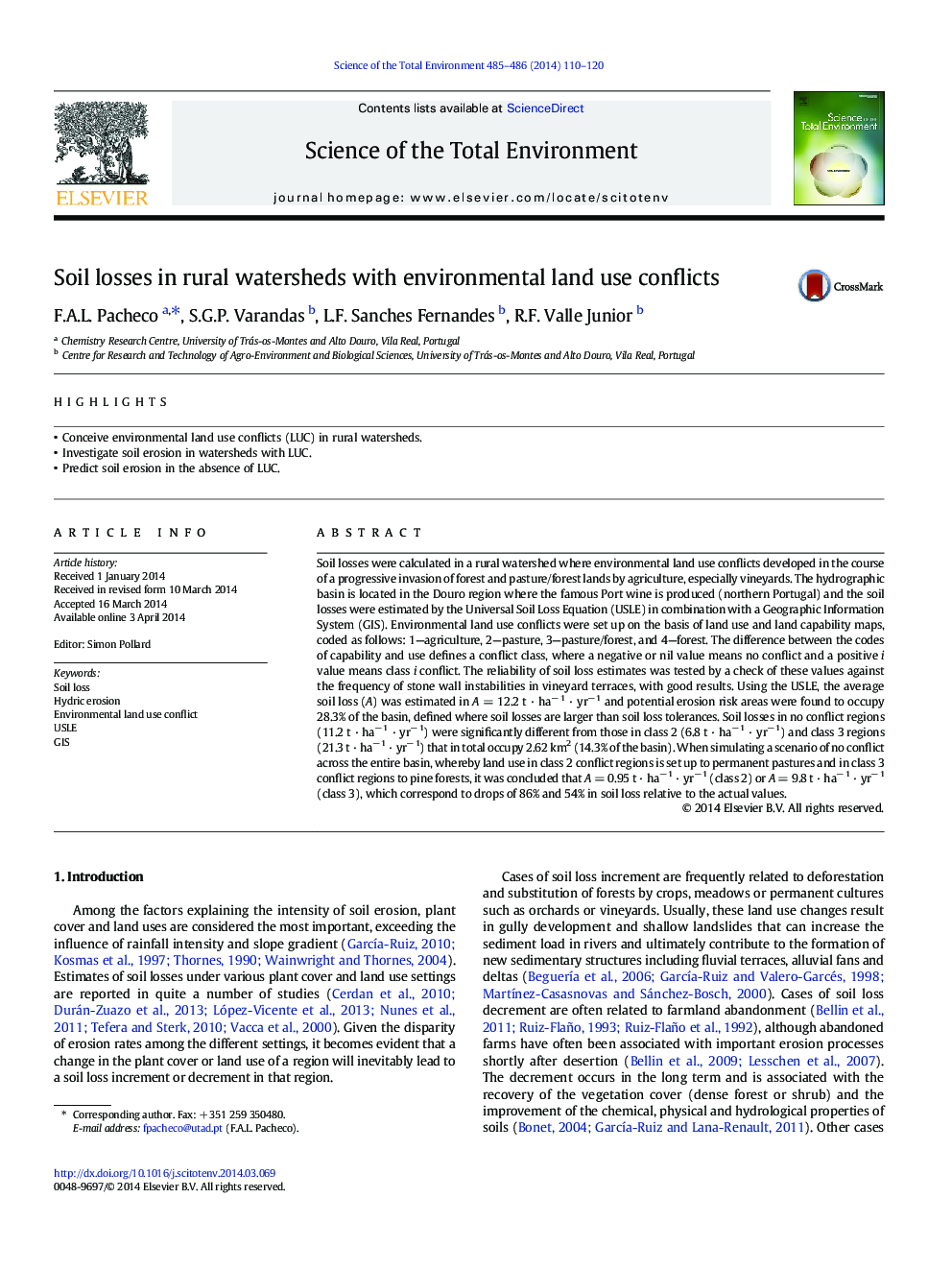| کد مقاله | کد نشریه | سال انتشار | مقاله انگلیسی | نسخه تمام متن |
|---|---|---|---|---|
| 6330338 | 1619783 | 2014 | 11 صفحه PDF | دانلود رایگان |
عنوان انگلیسی مقاله ISI
Soil losses in rural watersheds with environmental land use conflicts
ترجمه فارسی عنوان
تلفات خاک در حوضه های روستایی با درگیری های استفاده از زمین های زیست محیطی
دانلود مقاله + سفارش ترجمه
دانلود مقاله ISI انگلیسی
رایگان برای ایرانیان
موضوعات مرتبط
علوم زیستی و بیوفناوری
علوم محیط زیست
شیمی زیست محیطی
چکیده انگلیسی
Soil losses were calculated in a rural watershed where environmental land use conflicts developed in the course of a progressive invasion of forest and pasture/forest lands by agriculture, especially vineyards. The hydrographic basin is located in the Douro region where the famous Port wine is produced (northern Portugal) and the soil losses were estimated by the Universal Soil Loss Equation (USLE) in combination with a Geographic Information System (GIS). Environmental land use conflicts were set up on the basis of land use and land capability maps, coded as follows: 1-agriculture, 2-pasture, 3-pasture/forest, and 4-forest. The difference between the codes of capability and use defines a conflict class, where a negative or nil value means no conflict and a positive i value means class i conflict. The reliability of soil loss estimates was tested by a check of these values against the frequency of stone wall instabilities in vineyard terraces, with good results. Using the USLE, the average soil loss (A) was estimated in A = 12.2 t · haâ 1 · yrâ 1 and potential erosion risk areas were found to occupy 28.3% of the basin, defined where soil losses are larger than soil loss tolerances. Soil losses in no conflict regions (11.2 t · haâ 1 · yrâ 1) were significantly different from those in class 2 (6.8 t · haâ 1 · yrâ 1) and class 3 regions (21.3 t · haâ 1 · yrâ 1) that in total occupy 2.62 km2 (14.3% of the basin). When simulating a scenario of no conflict across the entire basin, whereby land use in class 2 conflict regions is set up to permanent pastures and in class 3 conflict regions to pine forests, it was concluded that A = 0.95 t · haâ 1 · yrâ 1 (class 2) or A = 9.8 t · haâ 1 · yrâ 1 (class 3), which correspond to drops of 86% and 54% in soil loss relative to the actual values.
ناشر
Database: Elsevier - ScienceDirect (ساینس دایرکت)
Journal: Science of The Total Environment - Volumes 485â486, 1 July 2014, Pages 110-120
Journal: Science of The Total Environment - Volumes 485â486, 1 July 2014, Pages 110-120
نویسندگان
F.A.L. Pacheco, S.G.P. Varandas, L.F. Sanches Fernandes, R.F. Valle Junior,
